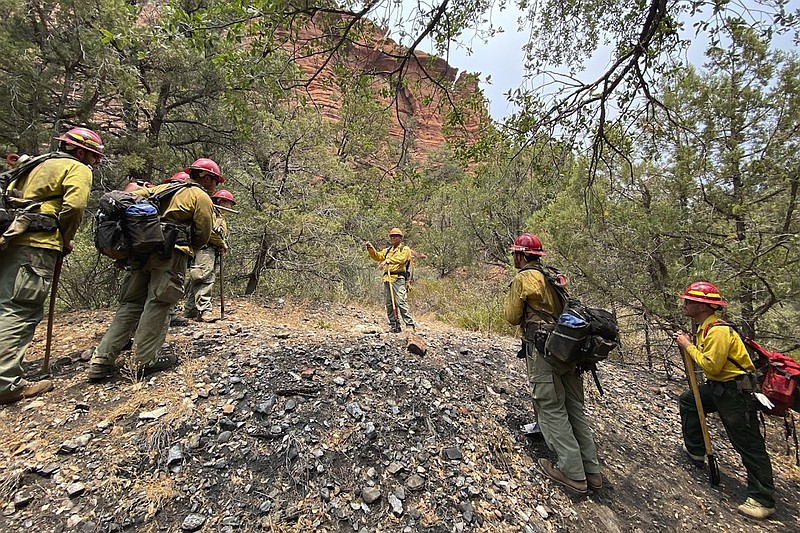By FELICIA FONSECA
Associated Press
FLAGSTAFF, Ariz. (AP) -- As Jason Nez scans rugged mountains, high desert and cliffsides for signs of ancient tools and dwellings unique to the U.S. Southwest, he keeps in mind that they're part of a bigger picture.
And, fire is not new to them.
"They have been burned many, many times, and that's healthy," said Nez, a Navajo archaeologist and firefighter. "A lot of our cultural resources we see as living, and living things are resilient."
As a pair of wildfires skirt this mountainous northern Arizona city, the flames are crossing land dense with reminders of human existence through centuries -- multilevel stone homes, rock carvings and pieces of clay and ceramic pots that have been well-preserved in the arid climate since long before fire suppression became a tactic.
Today, firefighting crews increasingly are working to avoid or minimize damage from bulldozers and other modern-day tools on archaeological sites and artifacts, and protect those on public display to ensure history isn't lost on future generations.
"Some of those arrowheads, some of those pottery shards you see out there have that power to change the way we look at how humans were here," Nez said.
The crews' efforts include recruiting people to advise them on wildlife and habitat, air quality and archaeology. In Arizona, a handful of archaeologists have walked miles in recent months locating evidence of meaningful past human activity in and around scorched areas and mapping it for protection.
Just last week, a crew spotted a semi-buried dwelling known as a pit house.
The nearby Wupatki National Monument -- a center of trade for Indigenous communities around the 1100s -- was evacuated because of wildfire twice this year. Exhibits there hold priceless objects, including 800-year-old corn, beans and squash, along with intact Clovis points, or stone arrowheads, that date back some 13,000 years.
Before the first wildfire hit in April, forcing the evacuation of the monument and hundreds of homes outside Flagstaff, there was no set plan on how to quickly get the artifacts out, said Lauren Carter, the monument's lead interpretive ranger.
"The Tunnel Fire made it an -- excuse the pun -- on-fire issue to finalize the plan," she said.
The fires have so far avoided the facility. Several boxes of items that trace back to what archaeologists say are distinct Indigenous cultures were taken to the Museum of Northern Arizona for safekeeping.
Some Hopi clans consider those who lived at Wupatki their ancestors. Navajo families later settled the area but slowly left, either voluntarily or under pressure by the National Park Service, which sought to eliminate private use of the land once it became a monument in 1924.
The monument has some 2,600 archaeological sites across 54 square miles (141 square kilometers), representing a convergence of cultures on the Colorado Plateau in the Four Corners where New Mexico, Arizona, Colorado and Utah meet. The region includes the Grand Canyon, the Painted Desert, Hopi mesas, volcanic cinder fields, the largest contiguous ponderosa pine forest in the U.S. and the San Francisco Peaks -- a mountain sacred to 13 Native American tribes.
"That gives you an idea of the density of the cultural history here, and that continues outside the national monument boundaries into the national forest," Carter said.
The Coconino National Forest on the southern edge of the plateau has surveyed just 20% of its 2,900 square miles (7,510 square kilometers) and logged 11,000 archaeological sites, Stevens said. Forest restoration work that includes mechanical thinning and prescribed burns has given archaeologists an opportunity to map sites and log items. More discoveries are expected because of the current wildfires, especially in the more remote areas, Stevens said.

